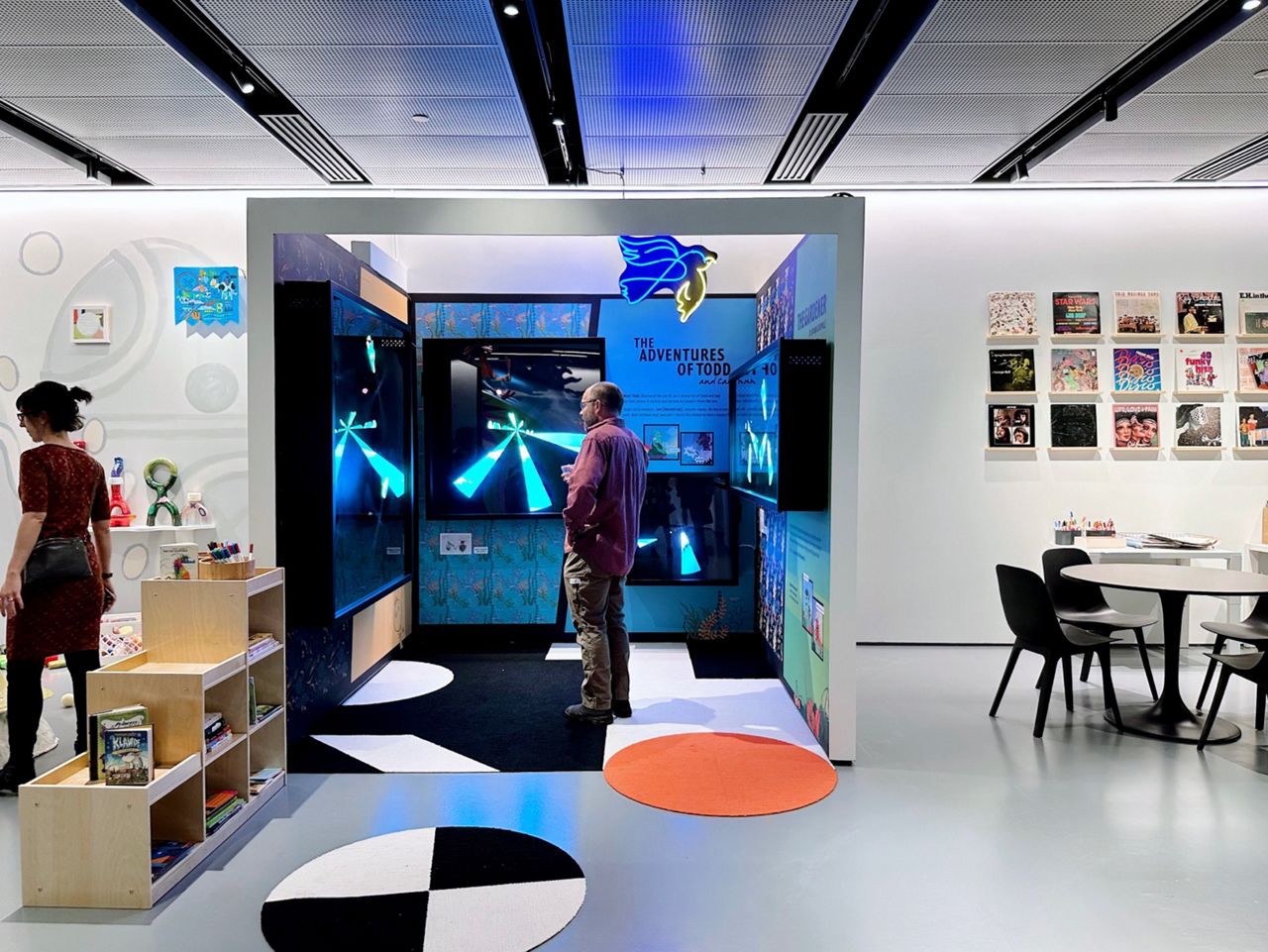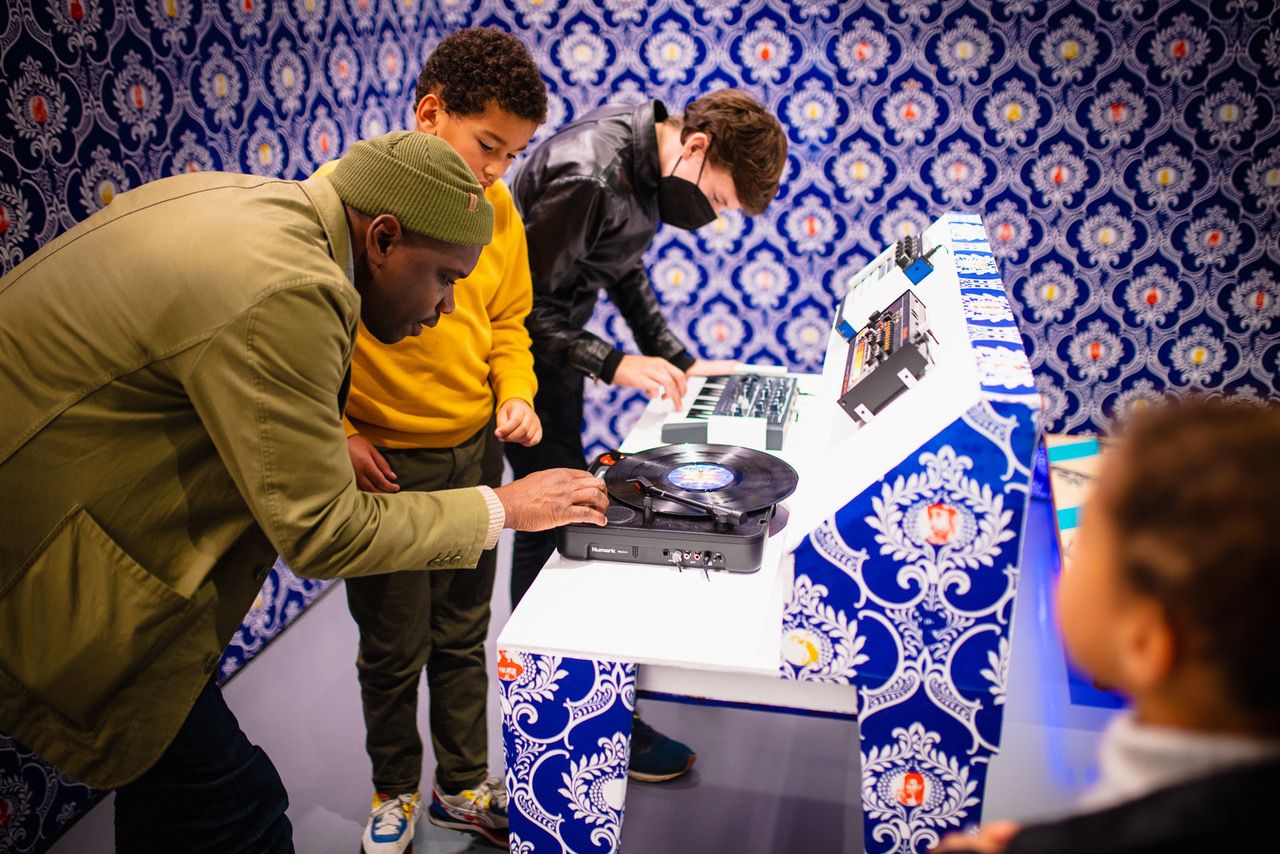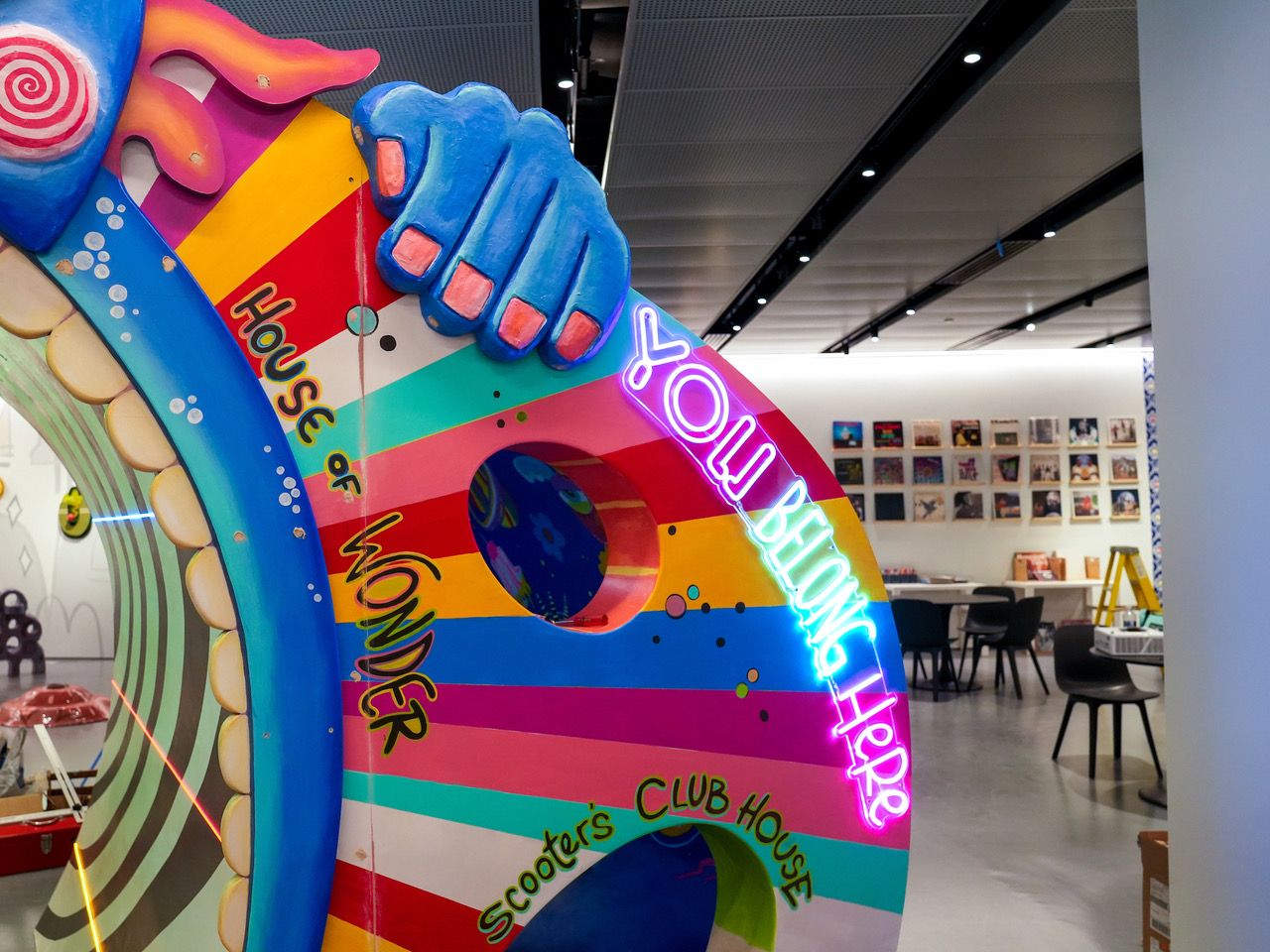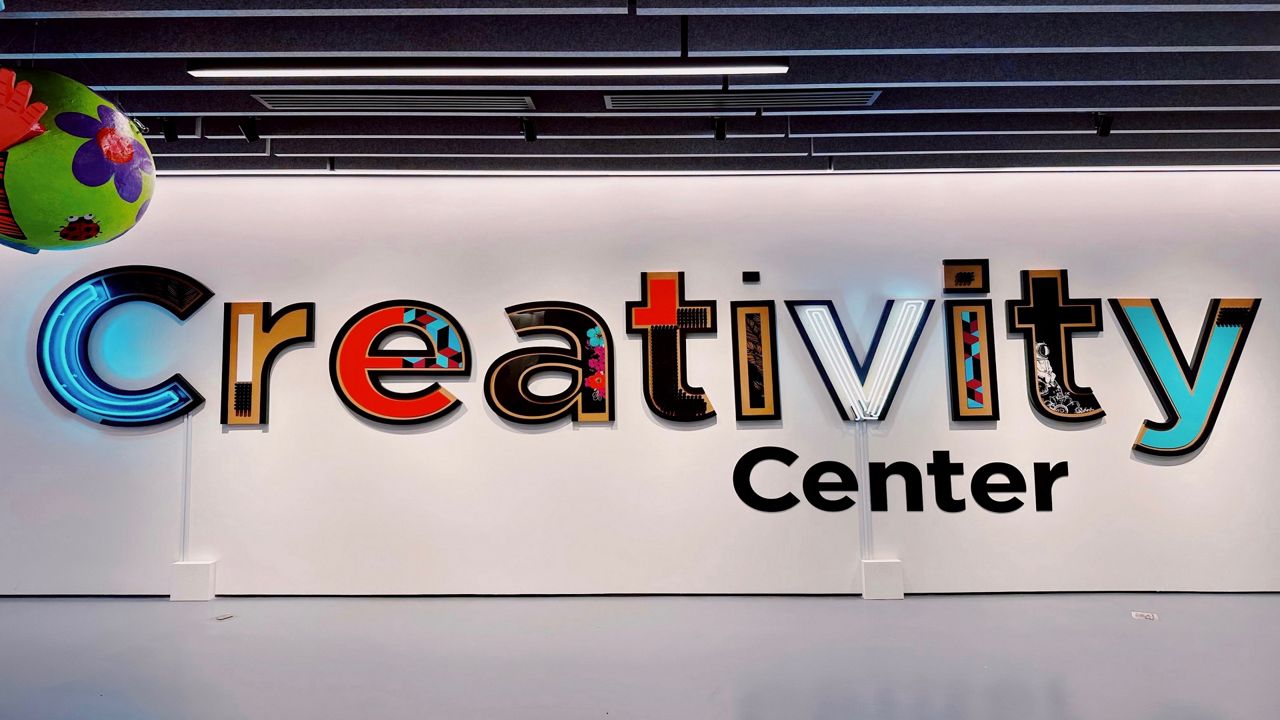CINCINNATI — After a year of hard work and nearly $5 million in renovations, the Contemporary Arts Center (CAC) is inviting art enthusiasts of all ages to explore — and make stuff — in a massive new creative space.
What You Need To Know
- The grand opening of the Contemporary Arts Center's Creativity Center is Saturday
- The year-long project cost nearly $5 million
- Construction included adding more room for galleries and community learning areas
- The free center is more than 10,000 square feet
On Thursday, the CAC had a formal ribbon-cutting to show off the (mostly) completed renovation of its sixth floor into a new 10,000-square-foot Creativity Center.
That includes the overhauling of the Sara M. and Patricia A. Vance UnMuseum, a staple at the CAC since it opened at the corner of Sixth and Walnut streets in downtown Cincinnati in 2003.

Alongside new interactive artwork in the UnMuseum, the Creativity Center offers a community gallery, a sustainability-focused art lab and an “innovation studio” complete with analog and digital tools.
The CAC has an official grand opening celebration set for Saturday. Plans include entertainment and activities from 11 a.m. to 2 p.m., as well as opportunities to explore the new space.
Marcus Margerum, the CAC’s interim director, described the renovated sixth floor as an expansion of the center’s mission to celebrate intergenerational learning and growth.
“The [UnMuseum] was groundbreaking in its emphasis on hands-on, interactive experiences,” Margerum said. “The Creativity Center takes that legacy and expands upon it, drastically increasing the opportunities we can offer and the number of people we can support on their journey to discovering their own creative spirit.”
The CAC originally moved into the seven-story structure in 2003. The building was the first U.S. project designed by Pritzker Prize–winning architect Zaha Hadid.
The jutting geometrical structure featured the revolutionary “urban carpet” concept that aimed to attract visitors from the sidewalks of one of the city’s busiest intersections into its building and up through the galleries.
Since the CAC opened nearly 20 years ago, the UnMuseum has been a destination for young people and families, especially those with younger children. It’s provided space for kids and adults to engage through interactive installments and create art alongside one another.
Since starting free admission in 2016, the CAC’s attendance has tripled to nearly 160,000 people per year, generating a stronger demand for more space and programs.

In response, CAC leadership decided roughly two years ago to make major renovations. They vocalized a desire to create a multimedia playground that merged interactive galleries, space for making art, and community-centric gathering areas.
The Creativity Center project was the second major update to the CAC’s building since its opening, following a lobby renovation in 2015.
The CAC partnered with Chicago-based architecture firm Mir Collective to create the design. There was a specific focus on environmental sustainability.
Construction started in October 2021.
Mir Collective’s design connects the floor more directly to Hadid’s “urban carpet” concept, creating a brighter, more inviting space.
Key elements include a sustainable art lab that features recycled or upcycled art supplies, along with a large studio featuring paint brushes and markers but also iPads and 3D printers.
There’s also a series of work areas described by the CAC as an “archipelago of pod-like pavilions” that is suitable for small gatherings or comfortable observation of studio activities.
Cal Cullen, executive director of Wave Pool Arts Center, said the reimagined UnMuseum space is a welcome addition for artists of all ages. She hopes to explore the space with her daughter Alice, 8, as soon as possible.
“As an artist and a parent, I am absolutely thrilled about the opening of the new Creativity Center,” Cullen said. “So many of my favorite local artists are featured and I imagine this is going to become one of the most beloved family spaces in Cincinnati.”
The Creativity Center makes it possible for the CAC to invest in new initiatives, such as a sensory-friendly program for kids and adults who are neurodivergent and have sensitivities to light and sound. They’re also planning a recurring open mic night and therapeutic workshops. There are plans to expand current initiatives, such as the Co-LAB program, which supports local artists with financial, marketing, and mentoring support.
The CAC is also offering space to artists to develop new projects and share their work through programming and events.

Through education and outreach programs, the CAC serves more than 57,000 visitors of all ages annually, including 53 schools and 400 artists.
Because of construction, the last few years have been “a challenge” for growing education and youth programs, according to Elizabeth Hardin-Klink, creative learning director at the CAC.
The education team has been teaching off an art cart and going from “room to room looking for whatever open space you can find.” The makeover provides “a lot more room” for creation and exploration, she said.
Now, they have a large studio space that allows them to serve up to 80 students at a time.
“To have not just a gallery but the top of the entire museum with this beautiful view of the city, it’s pretty incredible,” said Hardin-Klink.
One of Hardin-Klink’s favorite new pieces is "You Belong Here," an interactive archway that welcomes visitors to the sixth floor. It features that same phrase.
"We love the message of 'you belong here'," she added.
The piece came from Pam Kravetz, one of several local artists who worked to create an inaugural collection of interactive installations for the Creative Center’s launch. The plan is to rotate works every one to three years to showcase other artists’ work.
Other local artists with featured work include Michelle D’Cruz and Christopher Glenn, Garrett Goben, Terence Hammonds, Anissa Lewis, Abby Peitsmeyer, and Karen Saunders.
D’Cruz called Thursday’s ribbon-cutting “magical.”

The artists had been working upward of 12- to 15-hour days in recent weeks to bring the project together, D’Cruz said. She worked on several projects, including the creation of way-finding signage throughout the museum and a collaborative installation that uses holographic technology to convert imaginative characters created by children into an immersive storybook experience.
“All of the artists have become a tight-knit family,” D’Cruz said. “That is my single favorite thing to come out of this project.”
Although the space is now open to the public, there are a few additional pieces that will be installed over the next few months “because of unforeseen and unavoidable construction delays,” according to a CAC spokesperson.
The overall project cost is about $4.9 million. To date, the CAC has raised nearly $4.7 million in private and public donations, including funding from the State of Ohio and the City of Cincinnati. The museum is still looking to raise about $200,000 for the project.
Hardin-Klink brought her energetic five-year-old son, Izzy, to Thursday’s ribbon-cutting. He was one of the few kids who got to break-in the Creative Center, Hardin-Klink said. She described seeing him jumping up and down on the interactive elements as “pure joy.”
She plans to be there for Saturday’s opening as well.
“It was just so exciting to see something that we’ve been working with all these artists and planning for so long come to life,” she said. “To be a small part of making that happen and giving so many other parents to experience this together is so special.”





